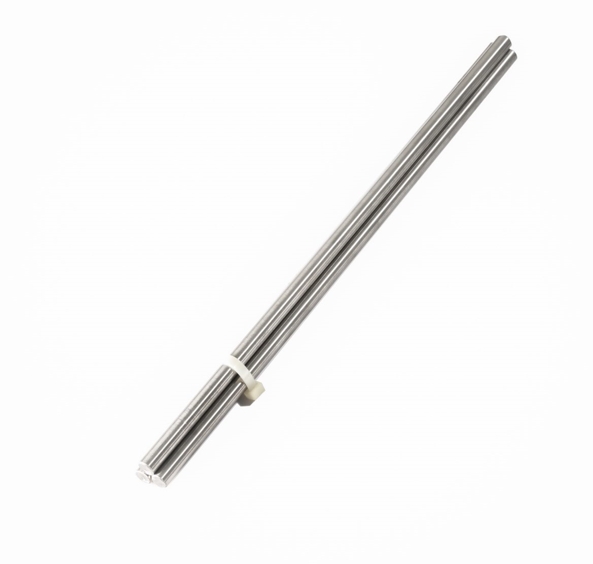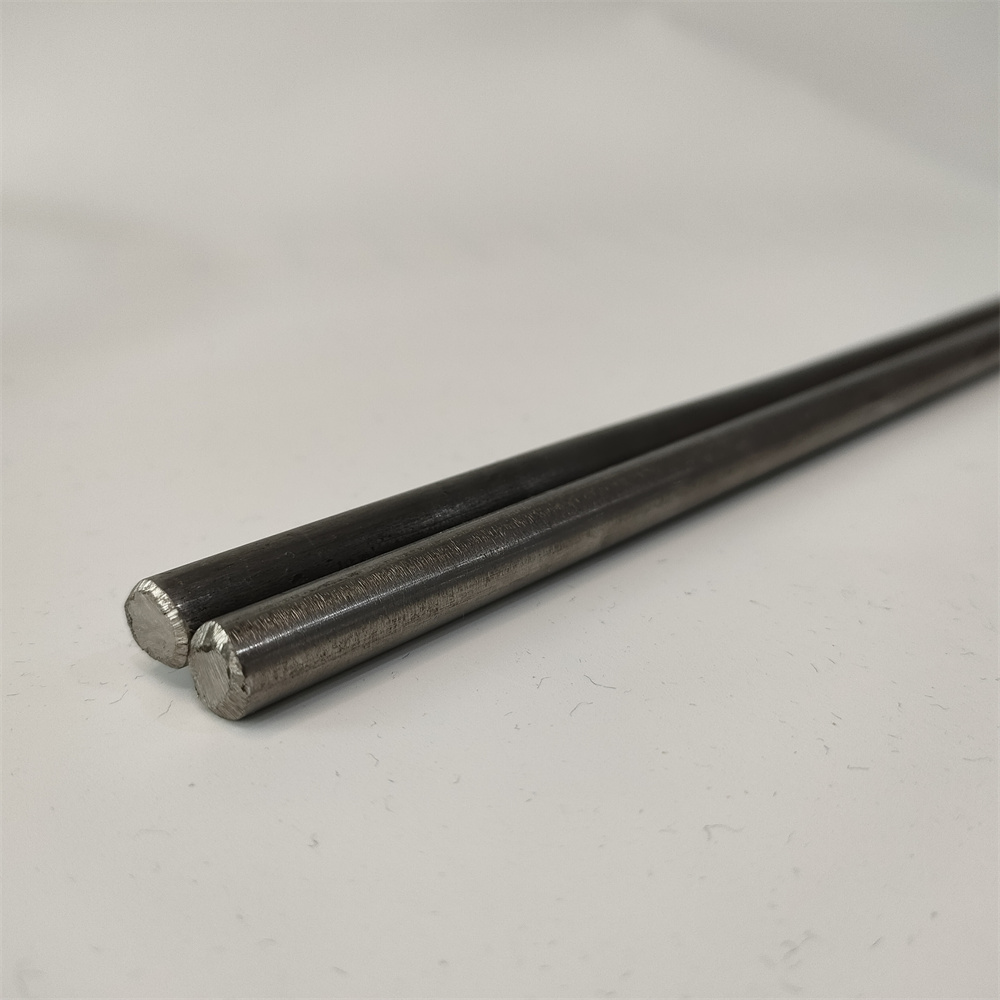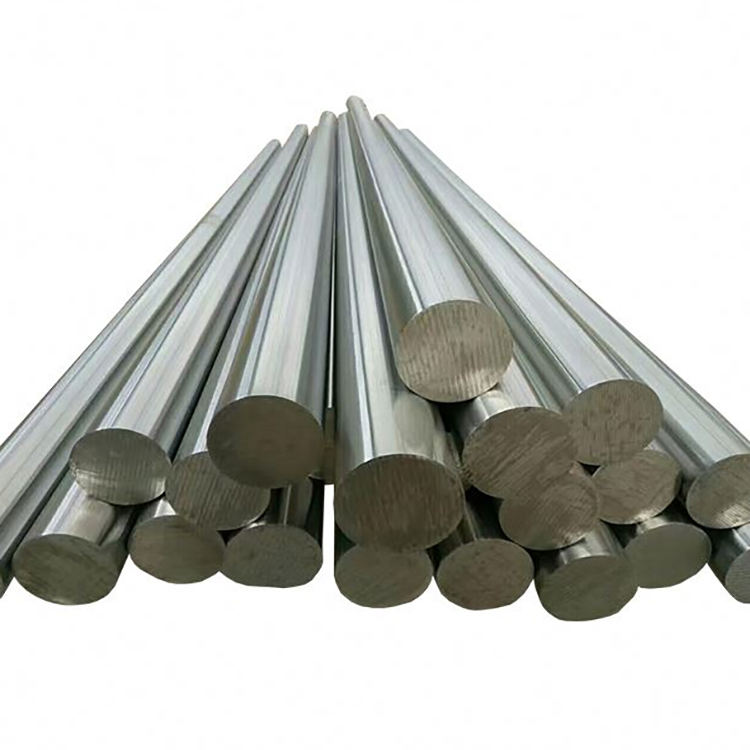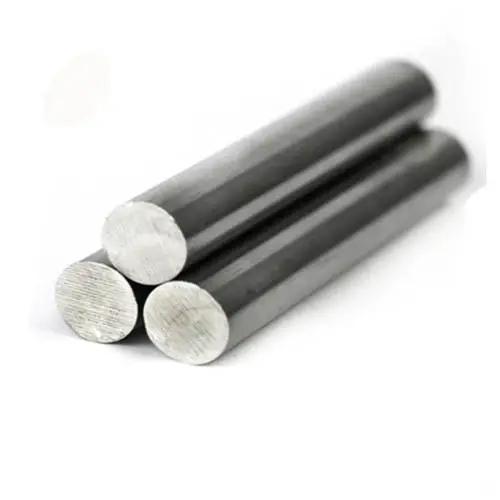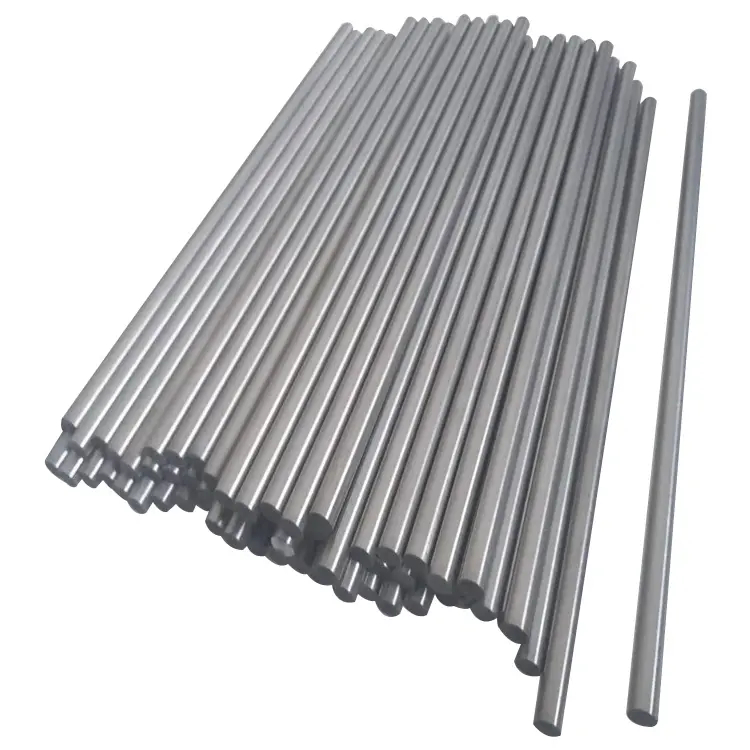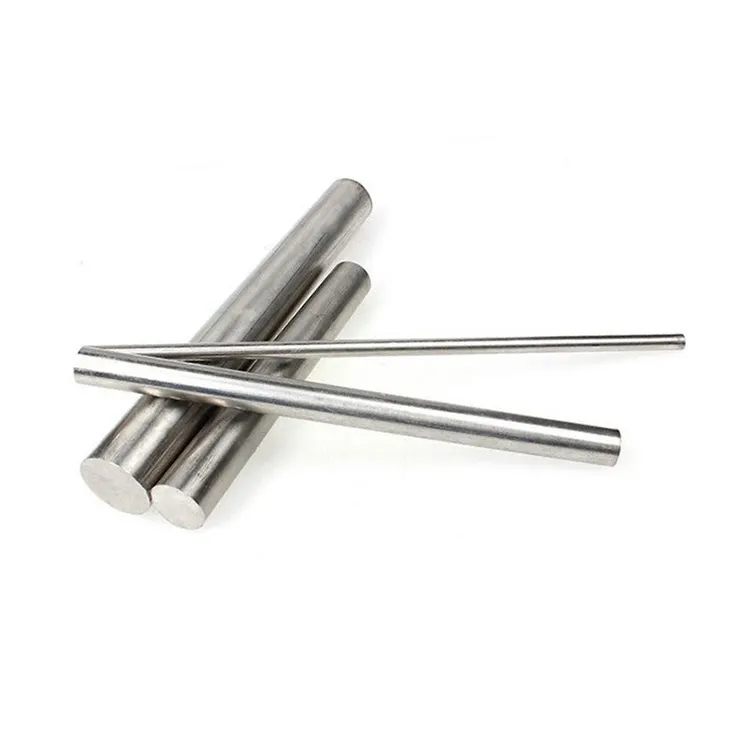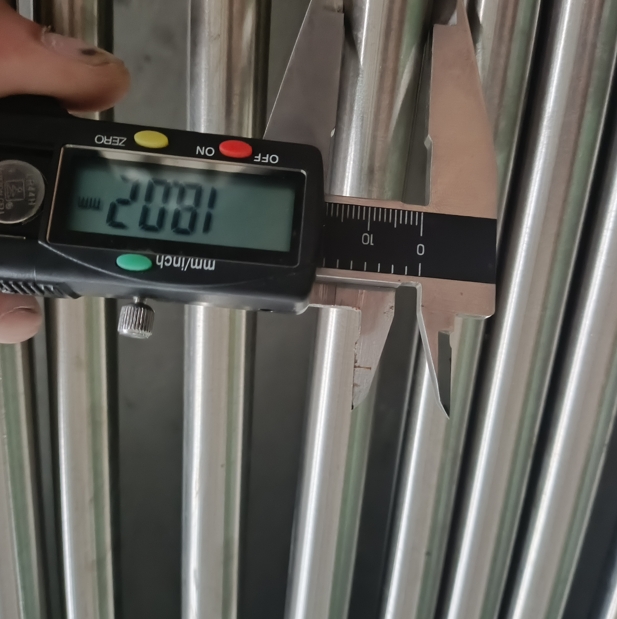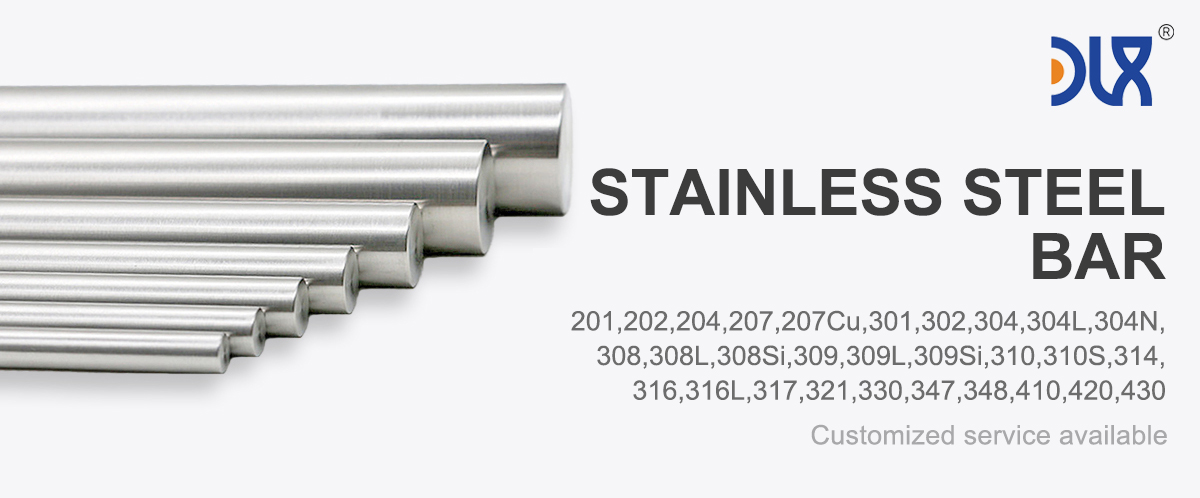
Our ASTM F899 stainless steel rod is the backbone of custom medical device fabrication, built to meet the rigorous demands of the healthcare industry. This isn’t just any steel—it’s a range of high-performance alloys, from austenitic to martensitic grades, designed for precision, durability, and reliability. Whether it’s crafting surgical instruments or prototyping innovative devices, our rods deliver the quality needed to save lives. We’ve fine-tuned our production to ensure every rod meets ASTM F899 standards, offering unmatched consistency for manufacturers creating everything from scalpels to diagnostic tools.
The magic of our ASTM F899 stainless steel rod lies in its versatile composition. Depending on the grade, it’s packed with iron (60-85%), chromium (12-19%), nickel (0-15%), and molybdenum (0-3.5%), with carbon content varying from 0.03% for biocompatible 316LVM to 1.2% for high-hardness 440C. This range lets us cater to diverse needs—316LVM offers tensile strength of 490-690 MPa and excellent corrosion resistance for implants, while 440C hits 760-1000 MPa with 56-60 HRC hardness for cutting tools. Our vacuum-melting process for grades like 316LVM minimizes inclusions, ensuring cleaner material that withstands sterilization and body fluids. Every rod is engineered to balance strength, toughness, and machinability, making it a go-to for custom fabrication.
For more details, pls directly contact us.
For medical applications, reliability is everything, and our ASTM F899 rods are built to perform. Grades like 316LVM form a robust passive oxide layer, resisting corrosion from saline or acidic environments in the body. This makes them ideal for long-term implants, with studies showing less than 0.5 µg/cm²/week of nickel leaching, minimizing allergic reactions. Martensitic grades like 420 or 440C, with hardness up to 60 HRC, excel in surgical tools where wear resistance is critical. Our advanced surface treatments, like electropolishing, create ultra-smooth finishes that reduce bacterial adhesion by up to 40%, per clinical data, ensuring safer devices in sterile settings.
Comparison of Medical Stainless Steel Grades, Materials, and Applications
|
Grade |
Composition |
Key Properties |
Corrosion Resistance |
Biocompatibility |
Applications |
Advantages |
Limitations |
|---|---|---|---|---|---|---|---|
|
316L |
Fe (60-70%), Cr (16-18%), Ni (10-14%), Mo (2-3%), C (<0.03%) |
Tensile: 485-620 MPa, Yield: 170-290 MPa, Elongation: 40-50%, Hardness: 95 HRB |
Excellent (passive oxide layer, resists pitting) |
High, minimal ion release, rare Ni sensitivity |
Bone plates, screws, stents, hip stems, dental implants |
Cost-effective, machinable, fatigue-resistant |
Possible Ni sensitivity, heavier than Ti |
|
304L |
Fe (65-74%), Cr (18-20%), Ni (8-10.5%), C (<0.03%) |
Tensile: 485-550 MPa, Yield: 170-240 MPa, Elongation: 40-55%, Hardness: 92 HRB |
Good, less resistant to pitting than 316L |
Moderate, higher Ni release risk |
Temporary implants, surgical tools, guidewires |
Affordable, easy to form, widely available |
Limited for long-term implants due to corrosion |
|
17-4 PH |
Fe (70-78%), Cr (15-17.5%), Ni (3-5%), Cu (3-5%), C (<0.07%) |
Tensile: 930-1100 MPa, Yield: 725-860 MPa, Hardness: 30-44 HRC |
Very good, but less than 316L in saline |
Good, but less biocompatible than 316L |
Load-bearing implants, surgical instruments |
High strength, heat-treatable, durable |
Complex processing, less corrosion-resistant |
|
420 |
Fe (80-90%), Cr (12-14%), C (0.15-0.4%) |
Tensile: 700-950 MPa, Yield: 340-450 MPa, Hardness: 45-50 HRC |
Moderate, prone to pitting in body fluids |
Moderate, not ideal for long-term implants |
Cutting tools, temporary pins, dental drills |
High hardness, wear-resistant, sharpenable |
Poor corrosion resistance for permanent use |
|
440C |
Fe (78-85%), Cr (16-18%), C (0.95-1.2%) |
Tensile: 760-1000 MPa, Yield: 450-600 MPa, Hardness: 56-60 HRC |
Moderate, better than 420 but less than 316L |
Limited, high carbon affects biocompatibility |
Surgical blades, high-wear tools |
Extremely hard, excellent edge retention |
Not suitable for long-term implants |
|
F138 (316LVM) |
Fe (60-70%), Cr (17-19%), Ni (13-15%), Mo (2.25-3.5%), C (<0.03%) |
Tensile: 490-690 MPa, Yield: 190-300 MPa, Elongation: 40-50%, Hardness: 95 HRB |
Superior, optimized for medical use |
Excellent, lowest ion release, vacuum-melted |
Orthopedic implants, cardiovascular stents |
Enhanced purity, top biocompatibility |
Higher cost than standard 316L |
|
303 |
Fe (65-75%), Cr (17-19%), Ni (8-10%), S (0.15-0.35%) |
Tensile: 500-620 MPa, Yield: 240-290 MPa, Elongation: 35-50%, Hardness: 90 HRB |
Moderate, sulfur reduces corrosion resistance |
Moderate, not ideal for permanent implants |
Machined components, non-implant devices |
Excellent machinability, cost-effective |
Not suitable for long-term implants |
|
Nitronic 60 |
Fe (60-70%), Cr (16-18%), Ni (8-9%), Mn (7-9%), N (0.08-0.18%) |
Tensile: 620-793 MPa, Yield: 345-414 MPa, Hardness: 95-100 HRB |
Very good, resists galling and wear |
Good, but less studied for implants |
Wear-resistant implants, joint components |
High wear resistance, galling resistance |
Limited medical use, higher cost |
For more details, pls directly contact us.
The medical device industry is booming, with the global market projected to hit $800 billion by 2030, driven by innovations in minimally invasive surgeries and personalized medicine. ASTM F899 stainless steel rods are at the heart of this growth, offering cost-effective, high-performance solutions for custom fabrication. Trends like 3D printing and CNC machining are transforming how devices are made, and our rods are optimized for these processes, with excellent machinability for intricate designs. Sustainability is also key—our rods are 100% recyclable, reducing waste in line with healthcare’s push for greener practices. The rise of smart implants with embedded sensors is another trend, and our rods provide the structural integrity needed for these cutting-edge applications.
Challenges persist, though. Corrosion remains a concern, with up to 5% of stainless steel device failures linked to pitting in harsh biological environments. We’re addressing this with research into nanostructured coatings that enhance resistance by 30%, based on recent studies. Regulatory standards, like ISO 13485 and ASTM F899, demand rigorous testing for chemical composition and mechanical properties. Our rods exceed these benchmarks, with every batch validated through X-ray fluorescence and fatigue testing to ensure compliance. The push for nickel-free alloys is growing due to allergy concerns in 10-15% of patients, and while our 316LVM minimizes nickel release, we’re exploring high-nitrogen alternatives to stay ahead.
Applications for our ASTM F899 stainless steel rod are vast, covering both surgical and diagnostic fields. Austenitic grades like 316LVM are used for bone screws, spinal fixation rods, and cardiovascular stents, offering long-term stability in the body. Martensitic grades like 420B and 440C shine in surgical instruments—think scalpels, forceps, and osteotomes—where their hardness ensures precision cutting and durability through countless sterilization cycles. Precipitation-hardening grades like Custom 465 are perfect for high-strength components like endoscopic tools, with tensile strengths up to 1750 MPa. Our rods also support diagnostic equipment, forming parts for endoscopes and imaging devices, where corrosion resistance and precision are critical. Even veterinary surgery benefits, with our rods used in animal orthopedic tools.
Comparing ourselves to the market, our ASTM F899 stainless steel rod stands out for its quality and versatility. We source the highest-purity raw materials, using vacuum-melting for grades like 316LVM to reduce inclusions by 300% compared to standard alloys. Our heat-treatment processes optimize hardness and toughness, ensuring tools like drills maintain edges longer and implants endure cyclic loads. Unlike generic suppliers, we offer tolerances as tight as ±0.002 inches, perfect for micro-machined components in minimally invasive devices. Every batch undergoes rigorous testing—chemical analysis, hardness checks, and ASTM E45 inclusion ratings—to guarantee zero defects.
Comparison Parameters Table
| Parameter | ASTM F899 (316LVM) | ASTM F899 (440C) | Titanium (Ti-6Al-4V) | Cobalt-Chrome (Co-Cr) |
|---|---|---|---|---|
| Density (g/cm³) | 7.9-8.0 | 7.7-7.8 | 4.4-4.5 | 8.3-9.2 |
| Elastic Modulus (GPa) | 193 | 200 | 110-114 | 210-240 |
| Yield Strength (MPa) | 190-300 | 450-600 | 800-900 | 450-1000 |
| Tensile Strength (MPa) | 490-690 | 760-1000 | 900-1000 | 900-1200 |
| Hardness (HRB/HRC) | ~95 HRB | 56-60 HRC | ~36 HRC | 30-40 HRC |
| Corrosion Resistance | Superior (vacuum-melted) | Moderate (good in dry conditions) | Superior in body fluids | Very good, but ion release risk |
| Biocompatibility | Excellent, low ion release | Moderate, suited for tools | Excellent, low reactivity | Good, but Co ion concerns |
| Cost | Moderate | Low | Medium | High |
| Common Applications | Implants, stents, forceps | Scalpels, drills, screws | Joint replacements, implants | Bearings, dental crowns |
| Machinability | Good | Fair | Medium | Low |
Customization is where we really pull ahead. Need a 440C rod with a specific hardness for a bone drill or a 316LVM rod polished for a stent? We deliver tailored solutions in days, not weeks. Our surface treatments, like passivation and mirror polishing, boost corrosion resistance and biocompatibility, cutting infection risks by up to 20%. Cost-wise, our rods are a smart choice, offering premium performance at a lower price than titanium or cobalt-chrome, making advanced devices more accessible. Our team of material scientists provides hands-on support, helping you integrate our rods into complex designs, saving you R&D time and costs.
Looking ahead, the medical device industry is set to evolve with AI-driven design and robotics advancing surgical precision. Our ASTM F899 rods are ready for this future, compatible with additive manufacturing and smart machining. We’re investing in bioactive coatings that could reduce implant rejection rates by 15%, per early research. With healthcare costs rising, our rods offer a cost-effective solution without compromising quality, supporting clinics in delivering better care. Their durability—often lasting 20+ years in implants—reduces revision surgeries, improving patient outcomes and lowering long-term costs.
In essence, our ASTM F899 stainless steel rod is more than a material—it’s a foundation for innovation in custom medical device fabrication. From life-saving surgical tools to next-gen implants, it’s built to perform where precision and reliability matter most. We’re committed to pushing the envelope, whether through cleaner alloys, smarter finishes, or faster delivery. As the medical field races toward new frontiers, our rods are right there, enabling manufacturers to create devices that transform lives with confidence.
For more details, pls directly contact us.


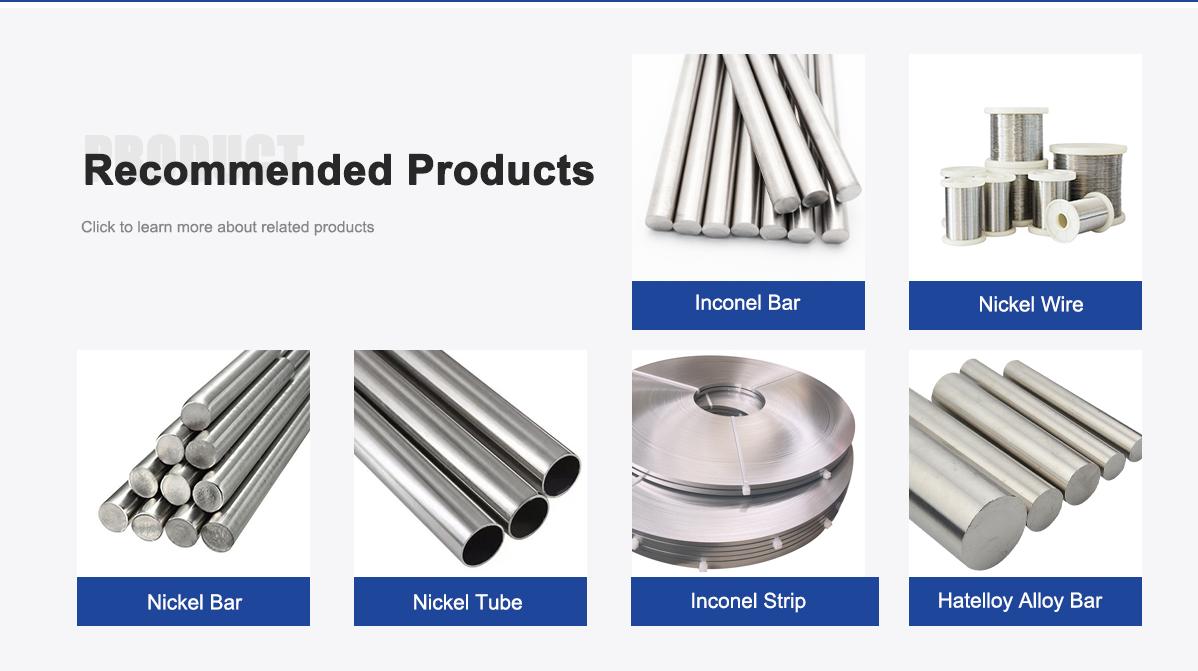
About Us:
Our 12,000㎡ factory is equipped with complete capabilities for research, production, testing, and packaging. We strictly adhere to ISO 9001 standards in our production processes, with an annual output of 1,200 tons. This ensures that we meet both quantity and quality demands. Furthermore, all products undergo rigorous simulated environment testing including high temperature, high pressure, and corrosion tests before being dispatched, ensuring they meet customer specifications.
For all our clients, we offer timely and multilingual after-sales support and technical consulting, helping you resolve any issues swiftly and efficiently.

Client Visits
Building Stronger Partnerships

We support all kinds of testing:


FAQs:
-
What is the composition of ASTM F899 stainless steel?
It varies by grade but typically includes iron (60-85%), chromium (12-19%), nickel (0-15%), molybdenum (0-3.5%), and carbon (0.03-1.2%), tailored for surgical-grade performance. -
What are the key mechanical properties of ASTM F899 stainless steel?
Depending on the grade, tensile strength ranges from 485-1100 MPa, yield strength from 170-860 MPa, hardness from 20-60 HRC, and elongation from 10-55%. -
How is ASTM F899 stainless steel used in custom medical device fabrication?
It’s used for surgical instruments like scalpels, forceps, and drills, as well as temporary implants and precision components in diagnostic equipment. -
What makes ASTM F899 stainless steel suitable for medical applications?
Its corrosion resistance, high strength, and ability to withstand repeated sterilization ensure reliability in sterile, high-stress medical environments. -
What are current industry trends for ASTM F899 stainless steel in medical devices?
Trends include precision machining for miniaturized devices, surface treatments for enhanced biocompatibility, and integration with 3D printing for custom fabrication. -
Is ASTM F899 stainless steel biocompatible for medical use?
Yes, particularly austenitic grades like 316LVM, though martensitic grades like 440C are better suited for tools due to moderate biocompatibility. -
What advantages does ASTM F899 stainless steel have over other materials?
It offers a balance of cost, machinability, and durability compared to titanium or cobalt-chrome, making it ideal for custom, high-precision medical tools. -
How does ASTM F899 stainless steel support sustainability in medical manufacturing?
Its recyclability, long lifespan, and efficient production reduce material waste and the need for frequent replacements, aligning with eco-friendly trends.

